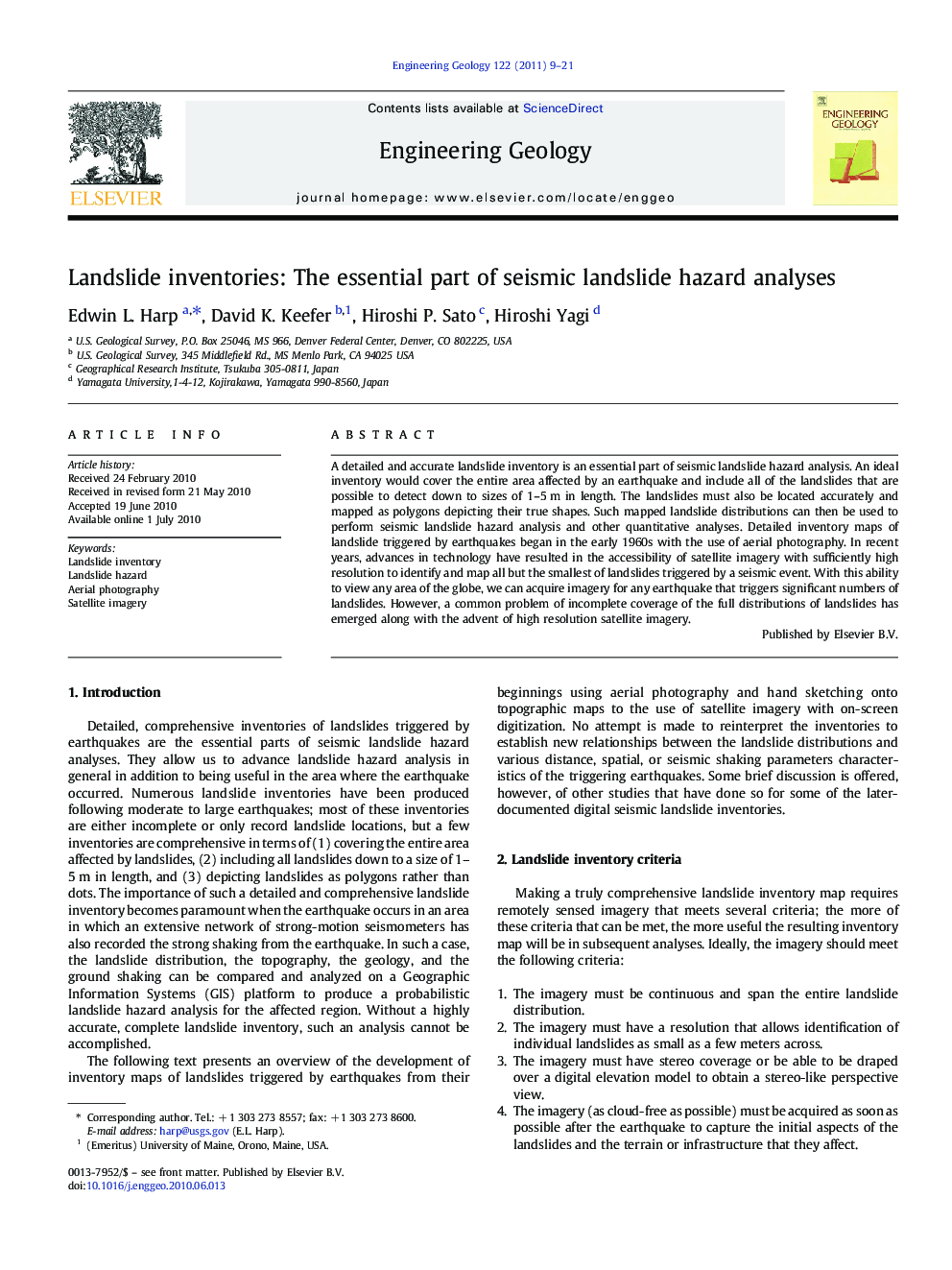| Article ID | Journal | Published Year | Pages | File Type |
|---|---|---|---|---|
| 4744331 | Engineering Geology | 2011 | 13 Pages |
A detailed and accurate landslide inventory is an essential part of seismic landslide hazard analysis. An ideal inventory would cover the entire area affected by an earthquake and include all of the landslides that are possible to detect down to sizes of 1–5 m in length. The landslides must also be located accurately and mapped as polygons depicting their true shapes. Such mapped landslide distributions can then be used to perform seismic landslide hazard analysis and other quantitative analyses. Detailed inventory maps of landslide triggered by earthquakes began in the early 1960s with the use of aerial photography. In recent years, advances in technology have resulted in the accessibility of satellite imagery with sufficiently high resolution to identify and map all but the smallest of landslides triggered by a seismic event. With this ability to view any area of the globe, we can acquire imagery for any earthquake that triggers significant numbers of landslides. However, a common problem of incomplete coverage of the full distributions of landslides has emerged along with the advent of high resolution satellite imagery.
Research Highlights► A detailed and accurate landslide inventory is an essential part of seismic landslide hazard analysis. ► An ideal inventory covers the entire area affected by an earthquake and includes all of the landslides down to sizes of 1-5 m in length. ► Complete inventories with landslides depicted as polygons can be used to perform seismic landslide hazard and other quantitative analyses.
